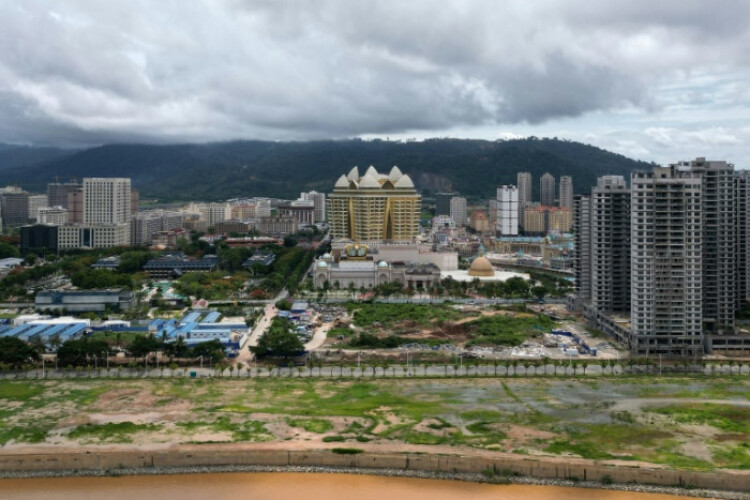
In 10 years or so, there could be more funerals than baby showers to attend as the number of deaths outstrips births among Singaporeans.
If – or when – this happens, Singapore’s population would shrink without immigration.
This will have far-reaching consequences, including for the size of Singapore’s workforce and economic dynamism, say academics who study population issues. It will also have an impact on the caregiving burden and the social fabric, they noted.
On Sept 9, Minister in the Prime Minister’s Office (PMO) Indranee Rajah said in a written reply to a parliamentary question: “Based on current trends, the number of citizen deaths could exceed the number of citizen births in the first half of the 2030s.”
She was responding to Non-Constituency MP Hazel Poa, who had asked for the number of citizen deaths in the past decade, and the year in which this figure would exceed citizen births.
There were 24,726 citizen deaths in 2023. This was a 40 per cent jump from 17,691 deaths in 2014.
In contrast, citizen births fell over the same time period. A PMO spokeswoman told The Straits Times that there were 28,877 such births in 2023, a 13 per cent fall from 33,193 in 2014.
Citizen births refer to those of babies who have at least one Singaporean parent, as such babies automatically get Singapore citizenship at birth, said the spokeswoman.
In her reply, Ms Indranee said the projections are meant to illustrate the growth and change in population that could happen if certain demographic assumptions prevail over the projected period. These assumptions may or may not be realised, she added.
These assumptions refer to those made about future fertility rates, migration and life expectancies, the PMO spokeswoman said.
When a country’s fertility has been in decline for a long time, its population becomes older and the number of deaths will naturally exceed the number of births, said Professor Jean Yeung, director of social sciences at the Agency for Science, Technology and Research Institute for Human Development and Potential.
The only question is how soon the number of deaths exceeds births, added Prof Yeung, who is also a professor at the NUS Yong Loo Lin School of Medicine. This depends on factors such as the magnitude and speed of fertility decline, she said.
Singapore’s resident total fertility rate, which refers to the average number of babies each woman would have during her reproductive years, has been on the decline for the past 30 years.
It fell below 1, to 0.97, in 2023, for the first time in Singapore’s history.
The Republic has put in place an arsenal of measures to boost the birth rate over the past two decades. This includes providing Baby Bonus cash gifts for newborns and more maternity and paternity leave, and extending government co-funding for in-vitro fertilisation treatment for older women.
On the other hand, Singapore’s population is rapidly ageing. In 2010, about one in 10 Singaporeans was aged 65 and older. By 2030, that figure is expected to rise to about one in four.
Academics interviewed were not surprised by the PMO’s projections, saying that countries with low birth rates such as China, Japan and Italy are already seeing more deaths than births.
These countries have tried to tackle the population decline in various ways, including introducing measures to boost their birth rates, postpone the retirement age and increase migration.
For example, Japan’s population fell for the 15th consecutive year in 2023, when 730,000 babies were born but 1.58 million people died.
In 2023, China’s population fell for the second year in a row. There were 11.1 million deaths and 9.02 million births.
Dr Tan Poh Lin, a senior research fellow at the Institute of Policy Studies, said that the actual year in which deaths overtake births is “not that significant”.
More critical is the pace at which the difference between the number of deaths and births continues to grow, as the “rapid speed of change in the population and workforce size will make it more difficult for society and the economy to adjust”, she said.
The main implications of a shrinking population are that the resident labour force would start to decline, and all economic activity tied to population numbers would also face a stagnant or declining market, said Associate Professor Walter Theseira, a labour economist from the Singapore University of Social Sciences.
He added: “Any economic activity catering to the domestic consumption sector, such as our food and beverage and retail, would suffer significant drag from a declining resident population.
“It could be made up for to some extent with a non-resident migrant population and tourists, but the long-term drag is likely to be significant. It would be hard to imagine any sector that wouldn’t be negatively affected.”
Dr Leong Chan-Hoong, head of the Social Cohesion Research Programme at the S. Rajaratnam School of International Studies at Nanyang Technological University, said an older population would also potentially place a heavier tax burden on adults of working age.
How these demographic challenges would affect the rate of immigration, and their impact on racial and national identity and also social cohesion, are also concerns, he added.
Prof Yeung said the Singapore Government has been preparing for this demographic challenge.
“That’s why a carefully calibrated number of immigrants have been added to Singapore’s population every year in the past decades,” she said.
Singapore’s population stood at 5.92 million as at June 2023, growing 5 per cent from 5.64 million the previous year.
From June 2022 to June 2023, the citizen population rose by 1.6 per cent to 3.61 million, while the permanent resident population increased by 3.7 per cent to 0.54 million. The non-resident population, which includes foreigners working or studying in Singapore, grew by 13.1 per cent from 1.56 million in June 2022 to 1.77 million in June 2023, according to the Population In Brief 2023 report.
Asia News Network/The Straits Times
If – or when – this happens, Singapore’s population would shrink without immigration.
This will have far-reaching consequences, including for the size of Singapore’s workforce and economic dynamism, say academics who study population issues. It will also have an impact on the caregiving burden and the social fabric, they noted.
On Sept 9, Minister in the Prime Minister’s Office (PMO) Indranee Rajah said in a written reply to a parliamentary question: “Based on current trends, the number of citizen deaths could exceed the number of citizen births in the first half of the 2030s.”
She was responding to Non-Constituency MP Hazel Poa, who had asked for the number of citizen deaths in the past decade, and the year in which this figure would exceed citizen births.
There were 24,726 citizen deaths in 2023. This was a 40 per cent jump from 17,691 deaths in 2014.
In contrast, citizen births fell over the same time period. A PMO spokeswoman told The Straits Times that there were 28,877 such births in 2023, a 13 per cent fall from 33,193 in 2014.
Citizen births refer to those of babies who have at least one Singaporean parent, as such babies automatically get Singapore citizenship at birth, said the spokeswoman.
In her reply, Ms Indranee said the projections are meant to illustrate the growth and change in population that could happen if certain demographic assumptions prevail over the projected period. These assumptions may or may not be realised, she added.
These assumptions refer to those made about future fertility rates, migration and life expectancies, the PMO spokeswoman said.
When a country’s fertility has been in decline for a long time, its population becomes older and the number of deaths will naturally exceed the number of births, said Professor Jean Yeung, director of social sciences at the Agency for Science, Technology and Research Institute for Human Development and Potential.
The only question is how soon the number of deaths exceeds births, added Prof Yeung, who is also a professor at the NUS Yong Loo Lin School of Medicine. This depends on factors such as the magnitude and speed of fertility decline, she said.
Singapore’s resident total fertility rate, which refers to the average number of babies each woman would have during her reproductive years, has been on the decline for the past 30 years.
It fell below 1, to 0.97, in 2023, for the first time in Singapore’s history.
The Republic has put in place an arsenal of measures to boost the birth rate over the past two decades. This includes providing Baby Bonus cash gifts for newborns and more maternity and paternity leave, and extending government co-funding for in-vitro fertilisation treatment for older women.
On the other hand, Singapore’s population is rapidly ageing. In 2010, about one in 10 Singaporeans was aged 65 and older. By 2030, that figure is expected to rise to about one in four.
Academics interviewed were not surprised by the PMO’s projections, saying that countries with low birth rates such as China, Japan and Italy are already seeing more deaths than births.
These countries have tried to tackle the population decline in various ways, including introducing measures to boost their birth rates, postpone the retirement age and increase migration.
For example, Japan’s population fell for the 15th consecutive year in 2023, when 730,000 babies were born but 1.58 million people died.
In 2023, China’s population fell for the second year in a row. There were 11.1 million deaths and 9.02 million births.
Dr Tan Poh Lin, a senior research fellow at the Institute of Policy Studies, said that the actual year in which deaths overtake births is “not that significant”.
More critical is the pace at which the difference between the number of deaths and births continues to grow, as the “rapid speed of change in the population and workforce size will make it more difficult for society and the economy to adjust”, she said.
The main implications of a shrinking population are that the resident labour force would start to decline, and all economic activity tied to population numbers would also face a stagnant or declining market, said Associate Professor Walter Theseira, a labour economist from the Singapore University of Social Sciences.
He added: “Any economic activity catering to the domestic consumption sector, such as our food and beverage and retail, would suffer significant drag from a declining resident population.
“It could be made up for to some extent with a non-resident migrant population and tourists, but the long-term drag is likely to be significant. It would be hard to imagine any sector that wouldn’t be negatively affected.”
Dr Leong Chan-Hoong, head of the Social Cohesion Research Programme at the S. Rajaratnam School of International Studies at Nanyang Technological University, said an older population would also potentially place a heavier tax burden on adults of working age.
How these demographic challenges would affect the rate of immigration, and their impact on racial and national identity and also social cohesion, are also concerns, he added.
Prof Yeung said the Singapore Government has been preparing for this demographic challenge.
“That’s why a carefully calibrated number of immigrants have been added to Singapore’s population every year in the past decades,” she said.
Singapore’s population stood at 5.92 million as at June 2023, growing 5 per cent from 5.64 million the previous year.
From June 2022 to June 2023, the citizen population rose by 1.6 per cent to 3.61 million, while the permanent resident population increased by 3.7 per cent to 0.54 million. The non-resident population, which includes foreigners working or studying in Singapore, grew by 13.1 per cent from 1.56 million in June 2022 to 1.77 million in June 2023, according to the Population In Brief 2023 report.
Asia News Network/The Straits Times










